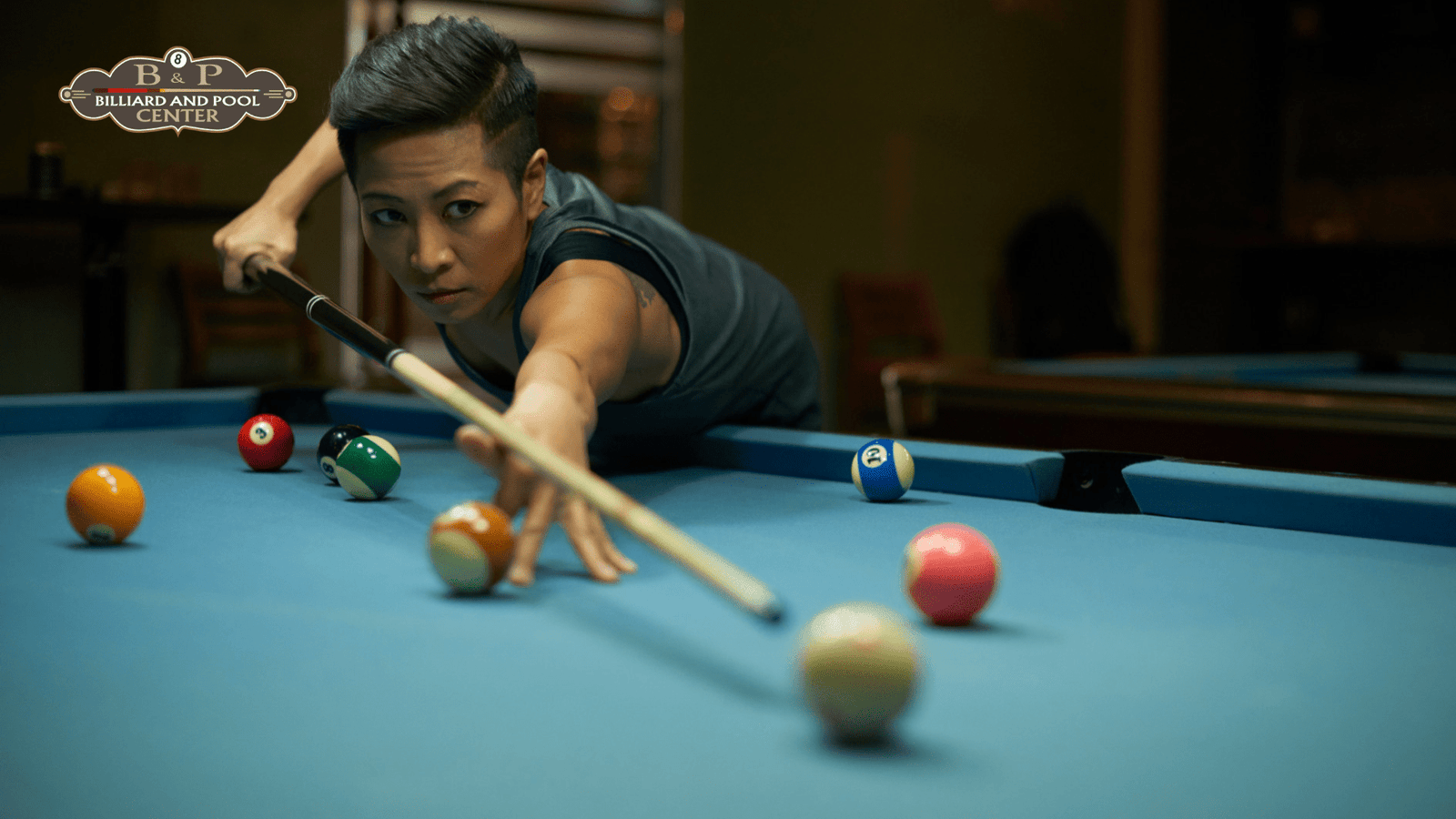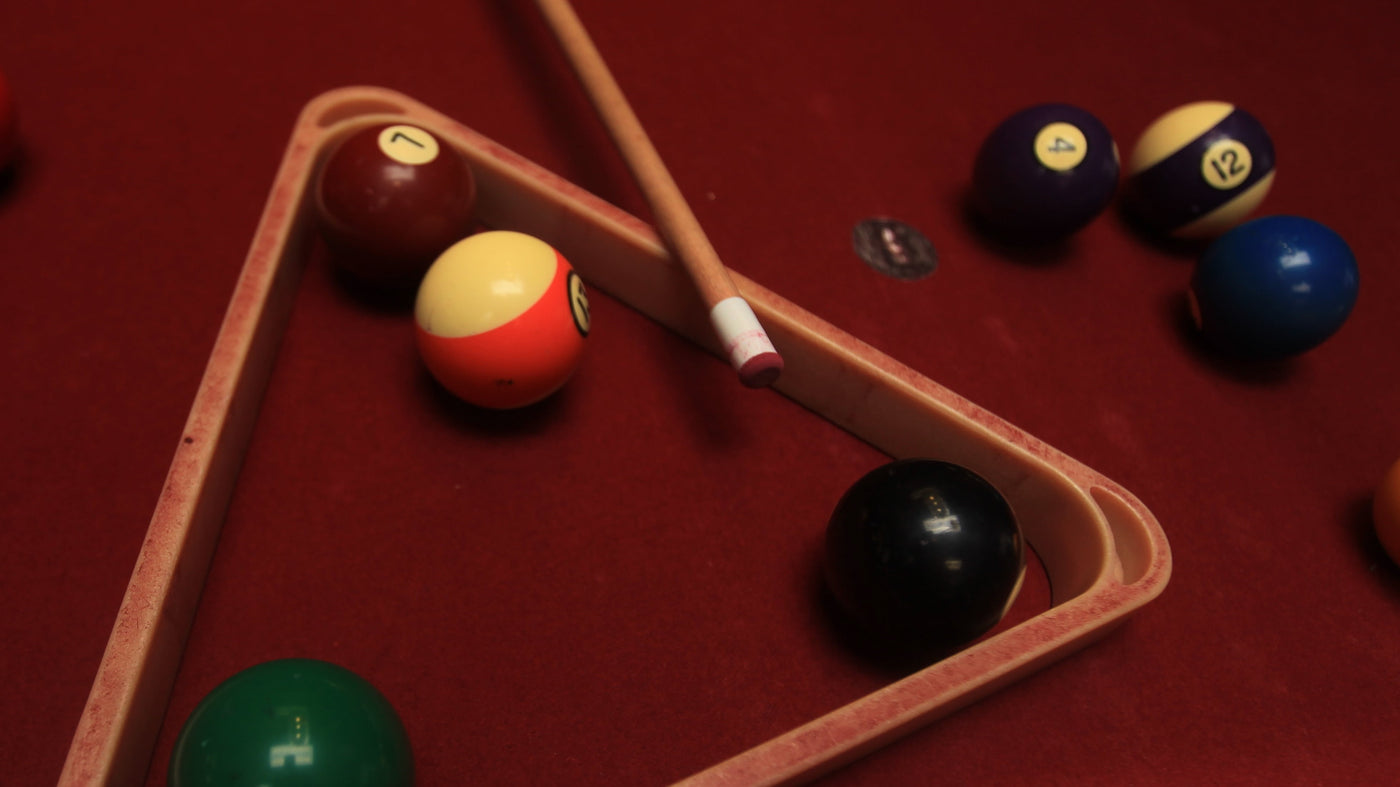8-ball, 9-ball, and straight pool are the backbone of billiards culture, each with distinctive rules and winning strategies.
Choosing the right pool game can be the turning point in how your skills and confidence grows.
This guide will get you through the step-by-step instructions, pro tips, and how to gear up for success using the best cues, reliable pool cases, and must-have billiards accessories.
Pool Gear and Essentials
Before considering the rules, ensure you’re equipped for the game:
• Pool cues: Options include everything from affordable models to high end pool cues. Materials range from traditional woods to modern carbon fiber pool cue and carbon fiber cue stick for low-deflection action.
• Pool balls: Most sets use 15 numbered balls plus a cue ball. Top-tier sets use tournament-quality resin for accuracy and durability.
• Racks:
- 8-ball: Triangle rack for 15 balls.
- 9-ball: Diamond rack for 9 balls.
- Straight pool: Triangle rack for 15 balls, seasoned for continuous replay.
• Pool cue cases: Protect your gear on the move with cushioned, sturdy organizers.
• Billiards accessories: Chalk, gloves, and cleaning supplies keep performance high.
8-Ball Pool: Rules and Gameplay
Overview:
Played with 15 object balls (solids 1–7, stripes 9–15) and a cue ball. The goal is to pocket all of your group (solids or stripes), then legally sink the 8-ball.
Step-by-Step Rules

1. Rack the Balls
Arrange balls tightly in a ball rack, with the 8-ball at center and a solid and stripe at each back corner. Balls are placed on the foot spot.
2. The Break
The breaking player shoots from behind the head string. For a legal break, the cue ball must pocket a ball or drive at least four balls to a rail.
3. Claiming Groups (Solids/Stripes)
After the break, the table is open. The first legally pocketed ball (after the break) determines each player’s group.
4. Gameplay
Players alternate turns, aiming only for their own group. Balls must be called (declared) before each shot in official play.
Fouls such as scratching (pocketing the cue ball), not hitting your group first, or jumping the cue ball off the table, give “ball in hand” to the opponent.
5. Winning
Pocket all group balls, then legally pocket the 8-ball. Sinking the 8-ball early or in the wrong pocket loses the game.
Key Fouls:
• Pocketing 8-ball prematurely.
• Failing to make contact with any ball.
• Jumping balls off the table.
9-Ball Pool: Fast-Paced Strategy
Overview:
Played with balls numbered 1–9 and a cue ball. Players aim to pocket the 9-ball last, but can win by making a legal combination shot that sinks the 9-ball.
Step-by-Step Rules
1. Rack Formation
Diamond-shaped rack, 1-ball up front, 9-ball in the center. Arrange other balls randomly.
2. The Break
Cue ball is shot at the 1-ball, must be from behind the head string. Legal break if any ball is pocketed or four balls contact rails.
3. Gameplay
On every shot, the cue ball must first make contact with the lowest-numbered ball remaining. Pocketed balls (except fouls, see below) stay down.
4. Winning
Sink the 9-ball legally by direct shot or combination to win. No need to pocket balls in strict order, but the lowest-numbered ball must always be struck first.
5. Fouls
• Failing to hit the lowest ball first.
• Scratching (cue ball into pocket).
• Jumping balls off the table.
6. Ball-in-Hand
Fouls give the incoming player ball-in-hand, able to place the cue ball anywhere.
Straight Pool: Endurance and Precision
Overview:
Played with all 15 balls; any ball can be targeted. Pocket balls in any order, calling each shot. First to reach the required score (e.g., 150 points) wins.
Step-by-Step Rules:
1. Rack and Break
Balls racked in a triangle. The breaker must call a ball and its intended pocket. If no ball is pocketed, at least two object balls and the cue ball must contact a rail.
2. Gameplay
On every shot, the shooter calls both ball and pocket. Each successful pocketed ball earns one point. Play continues uninterrupted until a miss or foul occurs.
3. Continuous Racking
When 14 balls are pocketed, they’re re-racked (leaving the 15th ball and cue ball out). The run continues with the shooter attempting to pocket the free ball and break into the pack for continued play.
4. Winning
The first player to reach the set score (usually 100 or 150 points) is declared the winner.
5. Fouls
Common fouls include missing called shot, failure to contact a rail, and standard infractions like scratching.
6. Unique Features
Emphasizes strategy, cue control, and long runs. Straight pool is a favorite among seasoned players due to its deep tactical play.
Key Differences Table
|
Feature |
8-Ball |
9-Ball |
Straight Pool |
|
Balls Used |
15 + cue ball |
9 + cue ball |
15 + cue ball |
|
Main Goal |
Pocket 8-ball last |
Pocket 9-ball last |
Reach points target |
|
Play Order |
Solids/stripes groups |
Strike lowest-numbered |
Any order, call shot |
|
Rack Shape |
Triangle |
Diamond |
Triangle |
|
Winning Shot |
8-ball |
9-ball |
Target score |
|
Calling Shots |
Yes, for 8-ball |
No (except 9-ball) |
Yes, every shot |
|
Fouls |
Scratch, early 8-ball |
Scratch, illegal contact |
Miss, no rail/\ scratch |
Pool Etiquette & Tournament-Ready Tips

• Always call shots clearly in games that require it.
• Respect equipment, including each player’s pool cues, balls and accessories.
• Use billiard cues and accessories like gloves or chalk for best performance.
• After each shot, clean your cue shaft to prevent buildup.
Tackle advanced moves and position play with trick shot guides for an extra layer of excitement and challenge.
FAQ: Reader Voice Search & Snippet-Ready Answers
Q: What is the main difference between 8-ball and 9-ball?
A: 8-ball divides balls into groups (solids and stripes); players must pocket their group first, then the 8-ball. 9-ball requires pocketing balls in numerical order, with the goal to sink the 9-ball last.
Q: Do you always have to call your pocket in a straight pool?
A: Yes, every shot in a straight pool must be called, including ball and pocket. It’s a precision-focused game.
Q: Which cues are ideal for these games?
A: For versatility, choose a professional pool cue with a well-balanced shaft and quality tip. High end pool cues crafted from carbon fiber cue deliver superior control for all formats.
Q: Can you use a snooker cue for an American pool?
A: It’s possible but not optimal. Snooker cues have smaller tips and lighter feel built for snooker balls on large tables.
Q: What happens on a foul in a 9-ball?
A: Opponent gains ball-in-hand and can place the cue ball anywhere on the table for their turn.
Final Thoughts: Turn Knowledge into Winning Shots
Understanding the rules of 8-ball, 9-ball, and straight pool gives you a confident edge whether you play for fun or at a professional level.
Choosing the right gear empowers every shot and ensures smooth gameplay.
At Billiard & Pool Center, we offer industry best pool balls and cue sticks, racks, and accessories trusted by professionals and everyday enthusiasts.
Knowledge is the bridge between a casual player and a future champion. Take your cue, apply your skills, and play with full trust in every rule.


